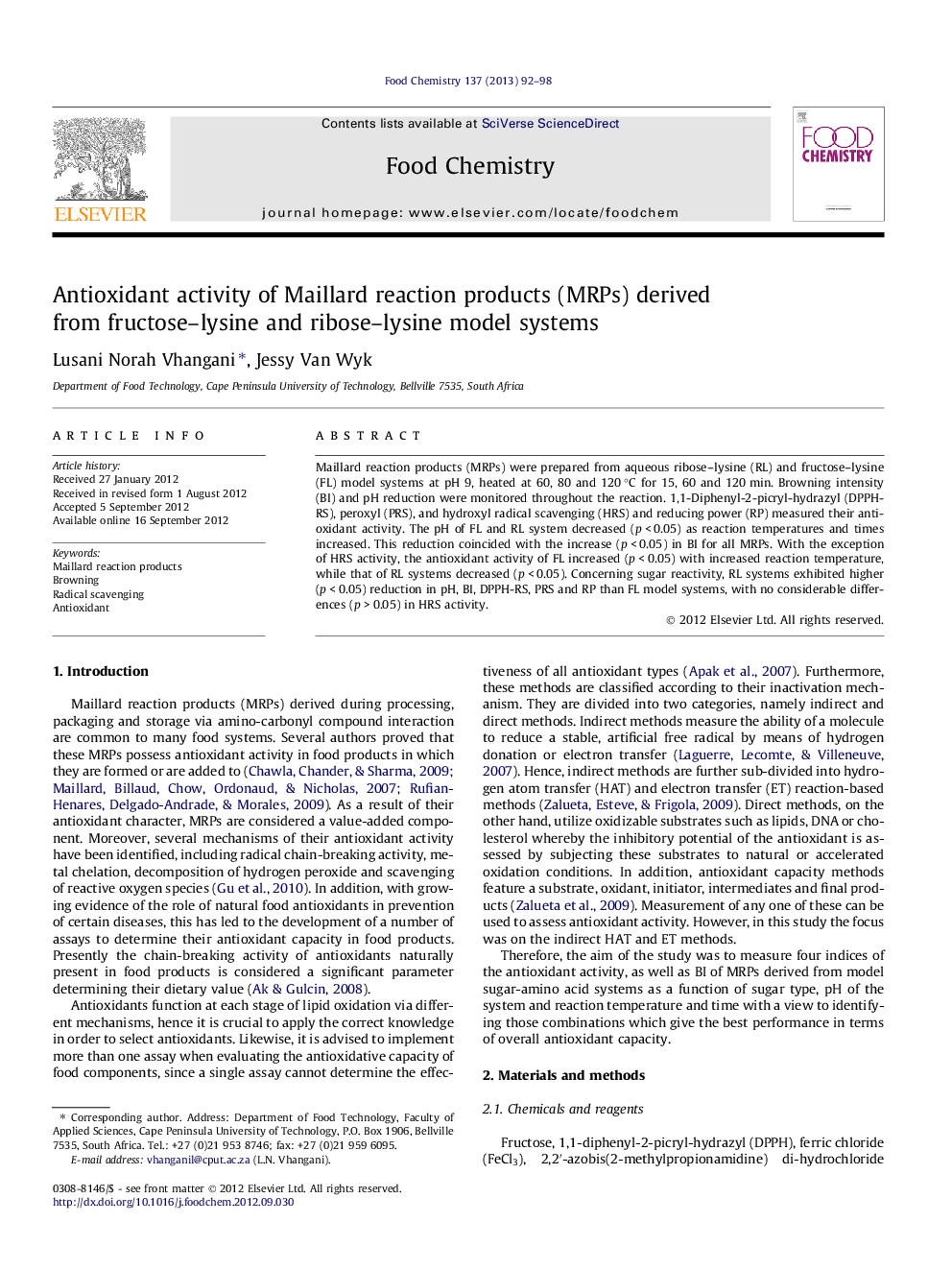| Article ID | Journal | Published Year | Pages | File Type |
|---|---|---|---|---|
| 1184278 | Food Chemistry | 2013 | 7 Pages |
Maillard reaction products (MRPs) were prepared from aqueous ribose–lysine (RL) and fructose–lysine (FL) model systems at pH 9, heated at 60, 80 and 120 °C for 15, 60 and 120 min. Browning intensity (BI) and pH reduction were monitored throughout the reaction. 1,1-Diphenyl-2-picryl-hydrazyl (DPPH-RS), peroxyl (PRS), and hydroxyl radical scavenging (HRS) and reducing power (RP) measured their antioxidant activity. The pH of FL and RL system decreased (p < 0.05) as reaction temperatures and times increased. This reduction coincided with the increase (p < 0.05) in BI for all MRPs. With the exception of HRS activity, the antioxidant activity of FL increased (p < 0.05) with increased reaction temperature, while that of RL systems decreased (p < 0.05). Concerning sugar reactivity, RL systems exhibited higher (p < 0.05) reduction in pH, BI, DPPH-RS, PRS and RP than FL model systems, with no considerable differences (p > 0.05) in HRS activity.
► Maillard reaction products (MRPs) posses various antioxidant activity. ► The antioxidant activity of MRPs varies with reaction temperatures and time. ► Ribose–lysine MRPs possessed higher antioxidant activity than fructose–lysine MRPs. ► Antioxidant activity of ribose–lysine MRPs decreased with increased reaction temperature and times. ► Antioxidant activity of fructose–lysine MRPs increased with increased reaction factors.
